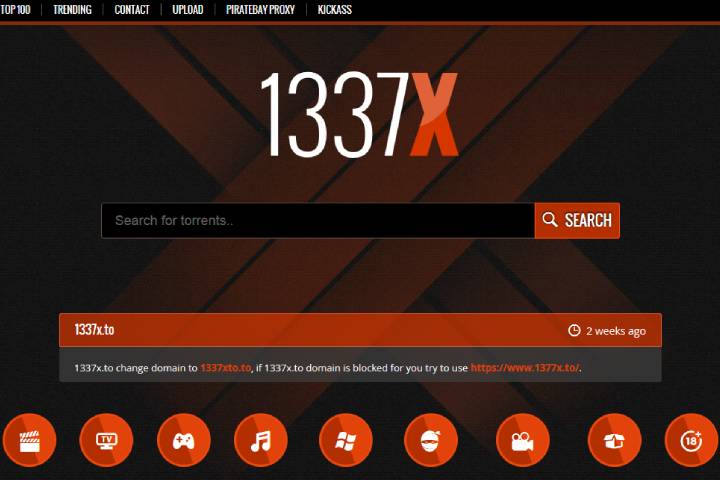Business
5 Resourceful Ways to Use Mobile Form Apps for Businesses
5 Resourceful Ways to Use Mobile Form Apps for Businesses. Efficient Supply Chain Management, Updated Information on Fleet, Easy Reporting

Mobiles and all other electronic devices prove to be essential for day-to-day business operations. These gadgets help you use forms and management apps that help decrease miscommunications and mistakes in tasks in several ways. They provide several benefits, including eradicating the use of paper and creating efficiency all over.
Employees can use mobile forms on different jobs and sites to input information and convey data in real-time. For this reason, introducing a forms app for your employees on and offsite can be advantageous and have the following uses:
Table of Contents
1. Efficient Supply Chain Management
With the influence of the pandemic, online shopping has ignited and is in great demand. Supply chain management can be hectic when orders are being pulled out and delivered every minute, and tracking the invoices becomes hard.
A system for real-time data input as a product moves from dispatch through delivery can help ease the process for managers. It helps to match the data provided by different workers offsite to the data recorded in the warehouses and keep the correct one to use and analyze later.
The data incurred is more accurate and can be administered speedily with results that can ignite the supply chain system and make it more competitive.
2. Updated Information on Fleet

Sending out fleets of products and goods to be used in a project or transportation services means that you need to be on top of all their moving. Managing an extensive fleet can be challenging if you can’t pinpoint your fleet’s locations and know whether the tasks are being handled timely or not.
Using paper forms to provide your drivers with inputting important data like attendance, delivery time, route taken, etc., can cause delays and inaccurate information stored.
This issue can be resolved with mobile forms, and more precise and timely data can be procured. In addition, real-time location can be grouped with gaps information and quick data fulfillment with records.
Forms prepared for fleet management can be used for other essential tasks like vehicle inspection, transportation quality, required repairs, etc. This information can make for quicker repairs and other measures taken timely to avoid father costs or mishaps.
3. Easy Reporting
Mobile forms can streamline daily reporting and update with instant form filling and quick processes. When employees are working outside of the facility and need to report something immediately, they can easily do it by sending mobile forms. Information can be provided timely and accurately to the correct department and manager to process it.
In-house managers and employees can understand the depths of a job and its timeline for completion. With the recurring information from the site, they can easily give out more help or data as the need arises to help the site workers.
Moreover, with the digital and same form for sending in the information, maintaining it and making records becomes easier than collecting data from different states.
4. Accumulate Billing
Perhaps the best use of mobile forms is igniting the billing process for all kinds of purchases and offsite costs and creating invoices for customers.
This process is made more accessible using forms apps by offsite workers for sending inaccurate time information regarding site requirements for materials and tools.
Instead of keeping the customers waiting to issue them their invoices and delay the company process by informing the purchases at the end of the day, using mobile forms to report faster makes things more efficient.
Customers can make payments faster, and the office can move on to the next task and make more profits in a shorter time.
5. Remote Jobs Supervision
Most companies have to deal with employees working in remote locations and offsite, and almost all face communication issues. This can cause unproductive jobs done, and insufficient information relayed to the company headquarters.
But with the use of the offline form filling feature of mobile forms, it becomes easier for employees to report fresh critical details as it appears and as its nature is. This can help the in-house department make adjustments and streamline their processes in line with the outside teams.
Companies can resourcefully use mobile forms to create lists and fill-in forms for workers to fill as they are dispatched or enter a new area for work.
Once they are done at one location, employees can be notified of the following job with a form including information and nature of the job and customers’ service. These forms can help the complete workers’ assignments faster and relay information as they apprehend it.
Business
Navigating the Process of Selling Deceased Estate Shares
This article aims to provide a comprehensive guide to selling shares from a deceased estate. Process of Selling Deceased Estate Shares.

Table of Contents
1. Understanding the Basics of Selling Deceased Estate Shares
Dealing with a deceased estate can be a challenging and emotional process, especially when it comes to handling financial assets like shares. This article aims to provide a comprehensive guide to selling shares from a deceased estate.
2. What are Deceased Estate Shares?
Deceased estate shares refer to the stocks and shares that were owned by an individual who has passed away. These shares become part of the deceased’s estate and are subject to the terms of their will or estate plan.
3. The Importance of Valuing the Shares
The first step in selling deceased estate shares is to obtain a current valuation. This valuation is crucial for several reasons: it helps in distributing the estate among beneficiaries, it may be necessary for tax purposes, and it gives an idea of the market value of the shares.
4. Legal Requirements and Executor Responsibilities
The executor of the estate plays a pivotal role in the management and distribution of the deceased’s assets. This section will cover the legal responsibilities and steps the executor needs to take to lawfully sell the shares.
5. Obtaining Probate
Before any action can be taken with the shares, it’s often necessary to obtain probate. Probate is a legal process that confirms the executor’s authority to deal with the deceased’s assets.
Transferring Shares into the Executor’s Name
Once probate is granted, shares may need to be transferred into the name of the executor. This process varies depending on the company and the type of shares.
6. The Process of Selling Shares
After completing legal formalities, the executor can proceed with selling the shares. This section will outline the steps involved in this process, including choosing a brokerage or financial service, understanding market conditions, and making informed decisions.
Deciding on the Right Time to Sell
Timing can significantly impact the returns from selling shares. Executors need to consider market conditions and financial advice to determine the best time to sell.
Completing the Sale
This subsection will detail the actual process of selling shares, including placing orders, handling transaction fees, and ensuring all regulatory requirements are met.

7. Navigating Tax Implications and Reporting
Managing tax obligations is a critical aspect of selling deceased estate shares. This section will explain the potential tax implications and the importance of accurate reporting for both capital gains tax and inheritance tax considerations.
Understanding Capital Gains Tax Responsibilities
When shares are sold, any profit made from the time of the deceased’s passing to the sale date may be subject to capital gains tax. Executors need to be aware of these implications and plan accordingly.
Inheritance Tax Considerations
In some jurisdictions, the value of the deceased estate’s shares might impact inheritance tax calculations. It’s essential for executors to understand these aspects in order to ensure compliance with tax laws.
8. Common Challenges and How to Overcome Them
Selling deceased estate shares can present unique challenges. This section will discuss common issues such as disputed wills, fragmented information about the shares, and market volatility.
Dealing with Disputed Wills and Beneficiary Disagreements
Disputes over the will or disagreements among beneficiaries can complicate the process. Executors must handle these situations delicately and legally.
Managing Market Volatility
Shares can be subject to market fluctuations. Executors should be prepared for this volatility and may need to consult financial advisors to navigate these waters effectively.
9. Tips for Executors Handling Deceased Estate Shares
This section will provide practical advice for executors, including the importance of seeking professional advice, keeping thorough records, and communicating clearly with beneficiaries.
Seeking Professional Financial and Legal Advice
The complexity of selling shares from a deceased estate often necessitates professional advice. This can range from legal counsel to financial advisory services.
Record Keeping and Communication with Beneficiaries
Maintaining transparent and thorough records is crucial. Executors should also prioritize clear and consistent communication with all beneficiaries to avoid misunderstandings.
Conclusion
Selling shares from a deceased estate is a responsibility that requires careful attention to legal, financial, and interpersonal dynamics. By understanding the process, staying informed about tax obligations, and tackling challenges head-on, executors can fulfill their duties effectively and respectfully.
-

 Instagram4 years ago
Instagram4 years agoBuy IG likes and buy organic Instagram followers: where to buy them and how?
-

 Instagram4 years ago
Instagram4 years ago100% Genuine Instagram Followers & Likes with Guaranteed Tool
-

 Business5 years ago
Business5 years ago7 Must Have Digital Marketing Tools For Your Small Businesses
-

 Instagram4 years ago
Instagram4 years agoInstagram Followers And Likes – Online Social Media Platform
















